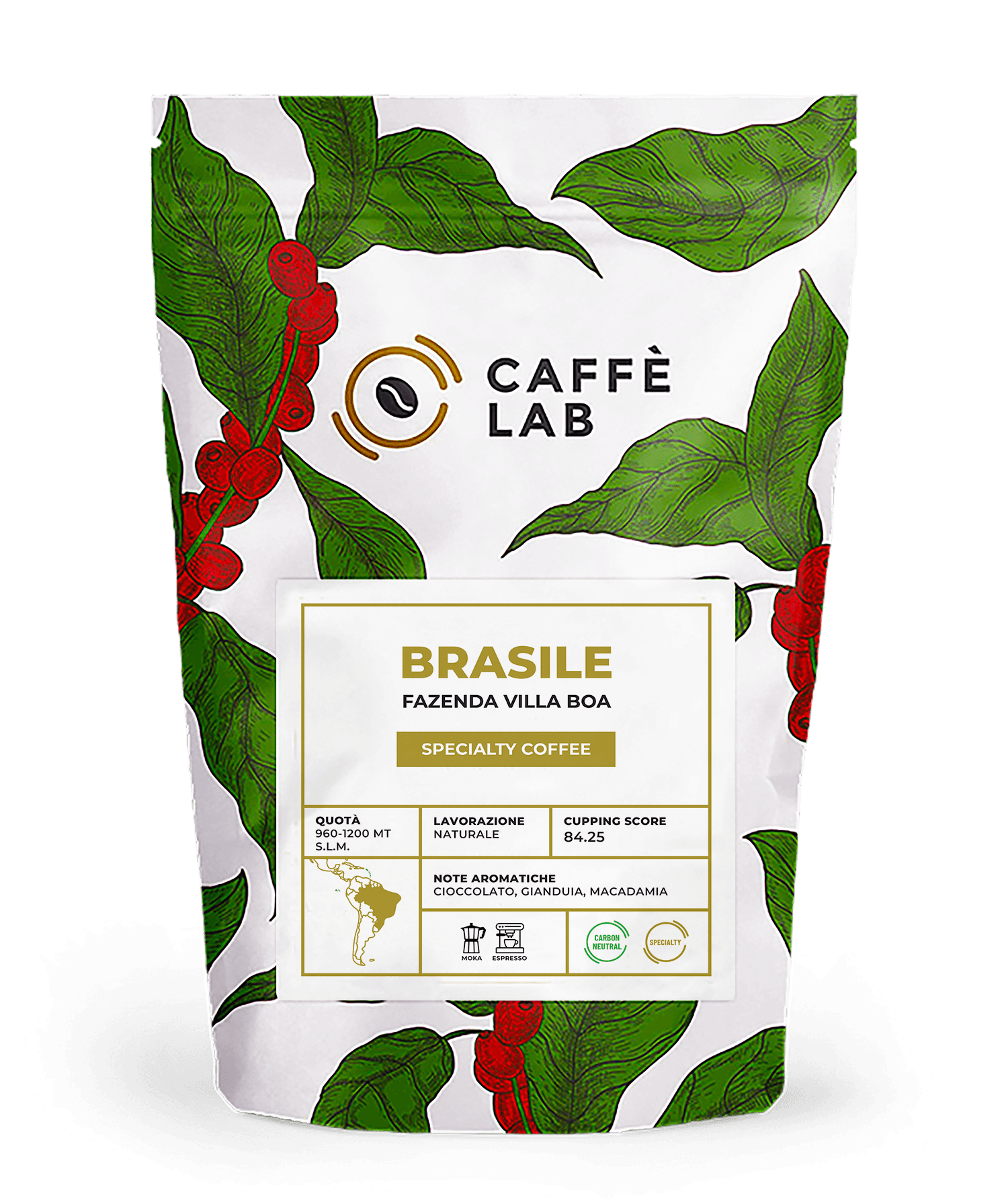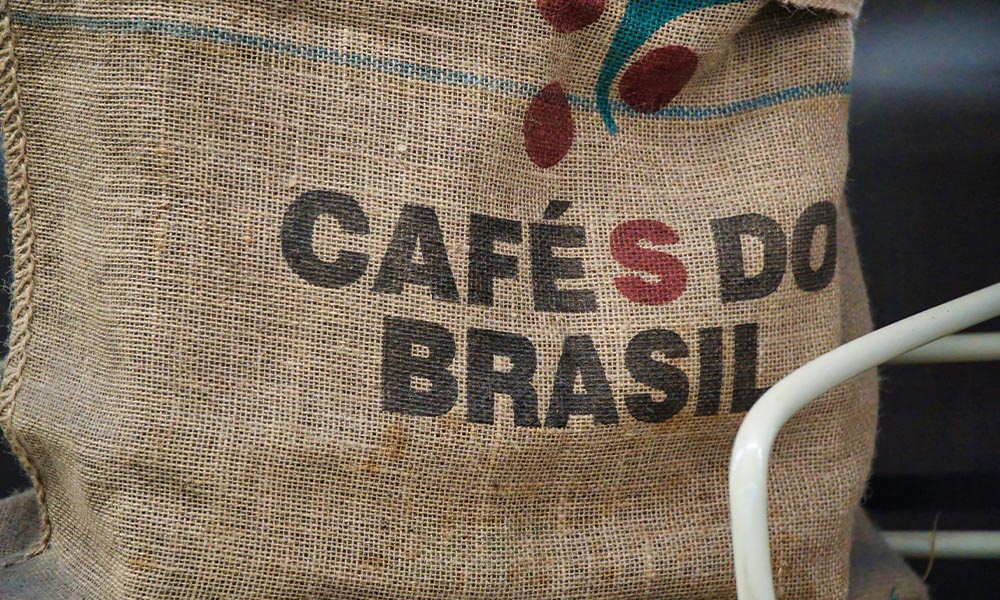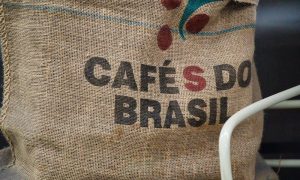
Brazil
Fazenda Villa Boa


Brazil and coffee are inseparable – bound together by centuries of history, tradition, and innovation. Known as the world’s leading producer, the country not only dominates the global market but also boasts a unique and fascinating culture surrounding the cultivation, processing and enjoyment of this beloved drink. Let’s explore the origins of Brazilian coffee, its unique characteristics, and the traditional recipes that bring out its best – taking us from the plantations to the kitchens of a country that has made coffee a true way of life.
Brazil’s journey with coffee began in 1727, when Portuguese officer Francisco de Melo Palheta was tasked with introducing the plant to Brazilian territory. According to legend, he secured the first seeds through a mix of clever diplomacy… and a rumoured affair with the wife of the French Guiana governor, who gifted him the precious beans.
Initially, cultivation began in the northern region of Pará, but coffee soon found its ideal home in the fertile lands of the southeast – especially in Minas Gerais, São Paulo and Rio de Janeiro. By the 19th century, coffee had become the driving force of Brazil’s economy, earning the nickname “green gold.” The coffee boom deeply influenced Brazilian society, spurring waves of European immigration to work on the plantations and transforming cities like Santos and São Paulo into major commercial and industrial hubs.
Today, Brazil continues to lead the global coffee scene, producing around one-third of the world’s total crop. But it’s not just about quantity: the country is also at the forefront of innovative farming and processing techniques, establishing itself as a benchmark in the world of single-origin and specialty coffee.

Brazil is vast and geographically diverse, offering a wide range of climates, altitudes and soil types. These conditions make it possible to grow coffee with a great variety of flavour profiles – suited to both the commercial and specialty markets.
This region is the beating heart of Brazilian coffee production, accounting for roughly 50% of the country’s output. Subregions like Sul de Minas, Cerrado Mineiro and Chapada de Minas are known for their sweet, well-balanced coffees, featuring notes of chocolate, caramel and nuts. Many certified high-quality plantations are found here.
The Mogiana plateau in São Paulo state is famous for its rich and full-bodied coffees with a gentle acidity. Its proximity to the port of Santos – Brazil’s main coffee export hub – has made this region historically significant in the coffee trade.
Espírito Santo is best known for its production of robusta (also known as canephora), typically used in blends and instant coffees. However, in recent years, it has gained recognition for its high-altitude arabicas, which produce surprisingly aromatic and complex brews.
Located in the northeast, Bahia is an emerging star in the specialty coffee scene. Subregions like Chapada Diamantina produce unique beans, often processed using natural or honey methods to highlight floral and fruity notes.
Thanks to this wide range of terroirs, Brazil is a true paradise for coffee lovers – offering something for every taste, from the classic to the refined.
Brazilian coffees are celebrated worldwide for their sweet and balanced aromatic profile. Often described as “chocolatey,” Brazilian beans deliver a smooth body and low acidity, making them ideal for both espresso blends and filter brewing methods.
A hallmark of Brazilian coffee is its processing method. Most beans are prepared using the natural (or dry) method, where the cherries are dried in the sun with the pulp still attached to the seed. This enhances the sweetness and brings out complex flavours with hints of honey, ripe fruit and spice.
In recent years, Brazil has made significant strides in the specialty coffee sector, focusing on prized varieties like Bourbon, Mundo Novo and Catuai – often grown at higher altitudes to develop more nuanced flavour profiles.
In Brazil, coffee isn’t just a beverage – it’s a ritual that brings people and traditions together. Here are a few of the most beloved and widespread preparations:
The Cafézinho is the essence of Brazilian coffee culture. Served in small cups, it’s a sweet and intense brew, made with a simple filter and always sweetened during the brewing process.
How to make it at home:
Café com Leite is the classic choice for Brazilian breakfasts – a comforting blend of filtered coffee and warm milk.
How to make it:
A rich and indulgent option for chocolate and coffee lovers alike.
Ingredients:
Preparation:
In recent years, Brazil has also become a major player in the world of specialty coffee. Through international competitions like the Cup of Excellence, Brazilian producers have shown that the country stands for quality as much as quantity. Local and international roasters now work closely with farmers to develop unique beans, often processed using experimental methods that enhance flavour complexity.
Brazilian coffee is a journey through flavour, history and tradition. From the plantations of Minas Gerais to the kitchens of Bahia, every cup tells the story of a nation that has turned coffee into a national symbol.
Discover the finest Brazilian coffees and brewing tools on our Caffelab shop – and be transported into a world of sweetness and depth.